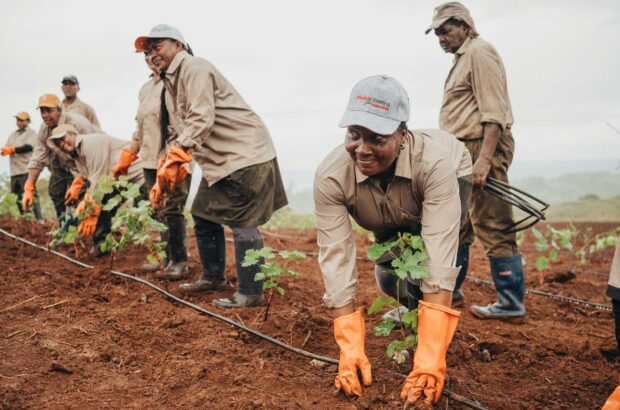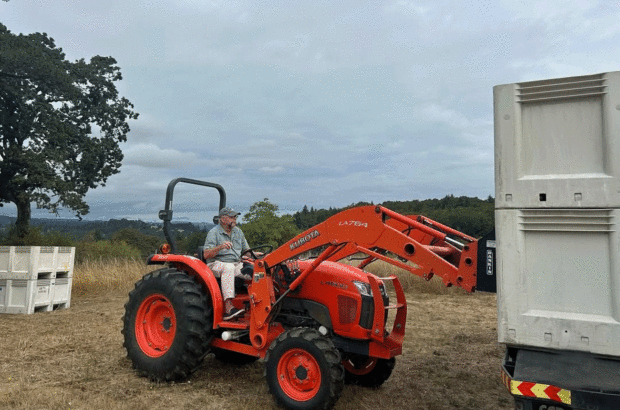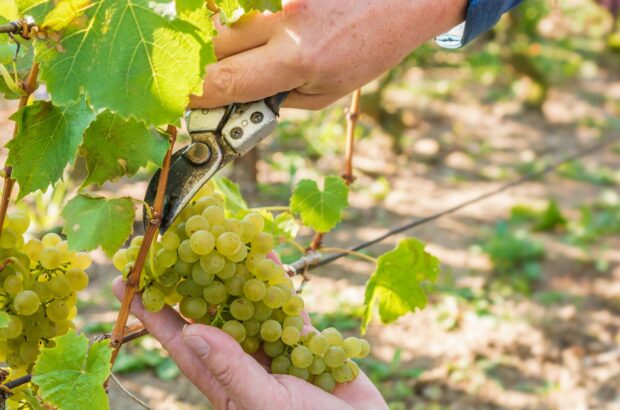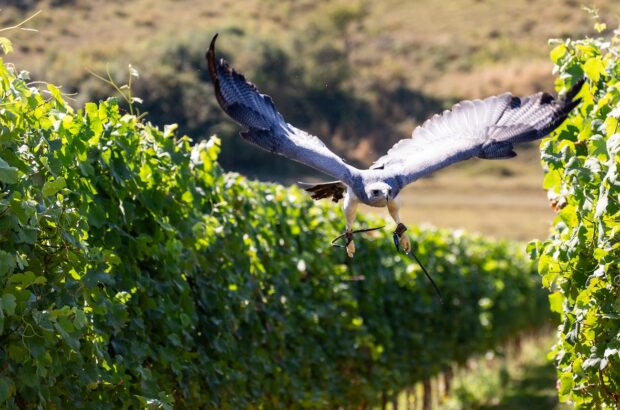The English wine harvest has started in summer-like temperatures – and producers are delighted with the quality of the crop.
English wine: ‘Quality not quantity’
After a miserably wet June, a summer that seemed unpromising but was in fact dryer than normal, followed by superb September weather, grapes across the board are coming in full of flavour with high alcohol and excellent acid balance.
‘If I was a still wine producer I’d be delighted with this,’ Owen Elias, winemaker at Kent’s sparkling-only Hush Heath vineyard told Decanter.com.
In common with most of Europe, Hush Heath, best known for its Balfour Brut Rosé, is three weeks to a month ahead with the harvest, the result of early flowering during the unusually hot weather in May and early June.
Elias said they would be finished by the end of September, when last year the harvest did not start until 21 October.
In all varieties the sugars are high, as is potential alcohol, while the only slight worry for those harvesting the Champagne varieties – Chardonnay, Pinot Noir and Pinot Meunier – is that acids are on the low side, Elias said.
It is unlikely that any chaptalisation – adding sugar – will be necessary this year, said Mike Roberts of Sussex winery RidgeView, whose Grosvenor Blanc de Blancs won the International Sparkling Wine Trophy at the Decanter World Wine Awards in 2010, and Regional trophy this year.
With the Pinots starting this week, Roberts said he had ‘wonderful tasting fruit’. The berries are small, he said, and with the red grapes they would ‘have to be careful not to get too much colour’, but he is confident the vintage will be of high quality.
Roberts pointed out that the summer, though cool and initially wet, was drier than average from July onwards. ‘It was grey and cloudy, but there wasn’t that much rain after the middle of July’.
According to the Met Office, the south of England in July and August 2011 saw more sun hours than corresponding months in 2010, and there was less rainfall.
At Biddenden in Kent, which is dedicated to making still wines from Bacchus and Ortega, owner Julian Barnes was also bullish. ‘It is quality not quantity. We are really pleased with what’s coming off the vineyard,’ he said, the grapes having good sugar and acid levels.
Most growers are reporting a smaller-than-usual yield this year.
At Devon producer Yearlstone they harvested their red grapes with ‘a natural alcohol ripeness of close to 12.5%,’ which is ‘perhaps the ripest crop of grapes…for a decade,’ a statement said.
‘Yields are low – perhaps half or less of the 2009 and 2010 levels – but as as result of the early start with that hot spring and the light load on the vine, the theme of high ripeness/flavour, balanced with decent acidities, is already emerging as the theme of 2011.’
Written by Adam Lechmere







